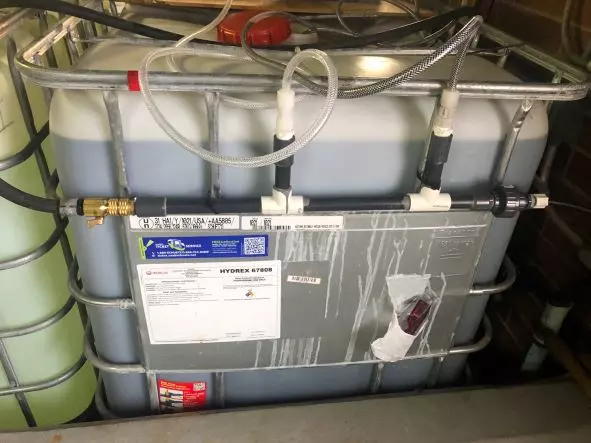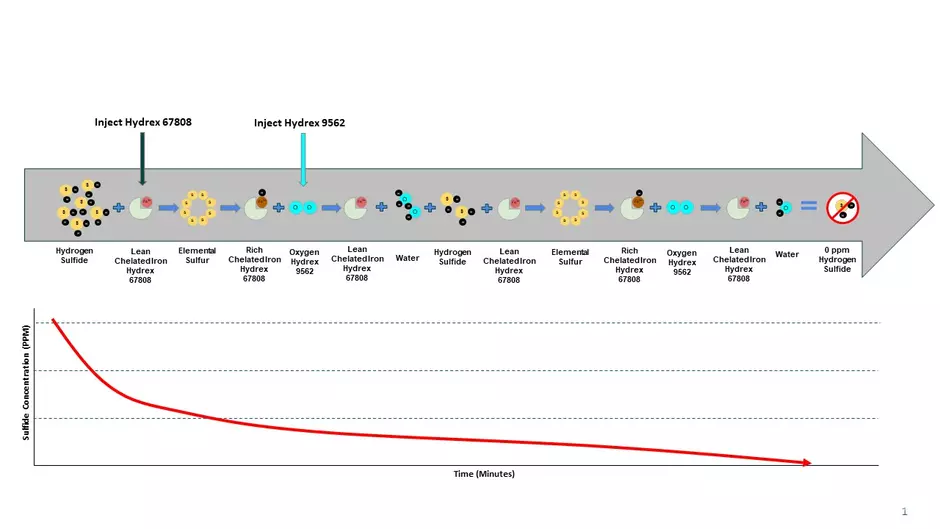The Challenge
A wastewater treatment plant in central Ohio has a primary clarification system that contributes to excessive odors within the belt press dewatering building. Sludge is stored in a gravity thickener and the belt press is operated approximately 27 hours a week (3 days @ 9 hrs/day). While H2S is not a significant contributor of the odor, there are other malodorous compounds that create an unpleasant condition for the operations staff.
The Solution

The Hydrex™ Odor Control technology is a very robust redox process that quickly oxidizes sulfides and other malodorous compounds. In 2 to 3 minutes of adequate mixing, the combination of Hydrex™ 67808 and Hydrex™ 9562 will remove > 90% of hydro-sulfides and the only by-products are elemental sulfur, dissolved oxygen, and water. Injecting the Hydrex™ chemistries in-line, immediately upstream from the belt press dewatering equipment, allows for a safer and more pleasant work environment.
Process Description
The Hydrex™ 67808 lean chelated iron (Fe3) complex is dosed into a manifold or pipe, as shown below, where it reacts with hydrogen sulfide and creates elemental sulfur, thus losing an electron, resulting in a rich (Fe2) molecule. When an oxygen source (Hydrex™ 9562) is introduced it regenerates the Hydrex™ 67808 chelated iron molecule and allows it to react with additional hydrogen sulfide. This redox process is created repeatedly until there is no presence of hydrogen sulfide available.

Results
A simple pilot setup utilizing the Hydrex™ 67808 and Hydrex™ 9562 was temporarily installed and within minutes, operations noticed a significant reduction of odors in the belt press room.
Further optimization was continued throughout the day and it was determined that the process was effective, therefore the plant decided to implement Veolia’s Hydrex™ odor control technology. After supplies of the previous chemical were exhausted, the plant installed a simple PVC manifold using the water hose in the building as a carrier to dose the Hydrex™ 67808 and Hydrex™ 9562 in series.
The plant has successfully been utilizing the treatment process and is currently optimizing the chemical injection to enhance efficiency and further reduce costs.
The Client
A Central Ohio Municipal WWTP with conventional activated sludge processes an average flow rate of 5 MGD. The biosolids are processed utilizing typical belt press dewatering equipment.
Key Benefits
- Quick solution
- Enhances health & safety of employees
- Non-hazardous option
- Reduction of malodorous odors
- No harmful by-products


